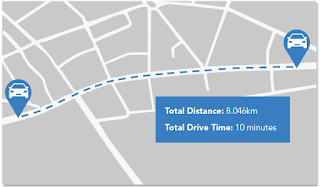Geocoding: Why Location Is More than an Address
One of the first things businesses ask their new customers for is their address. This address pays a vital role in creating customer profiles. Based on the address, the customer may be categorized under different groups for marketing and sales purposes. The address also plays an important role when determining delivery timelines. Thus, precision and accuracy are crucial. If you have the wrong address, your customer profile could be wrong and you’ll never be able to make that delivery on-time. This is where geocoding comes in
What is Geocoding?
It’s said that the three most important things in retail are location, location, and location. Geocoding refers to the process of converting street addresses into pinned points on a map based on the associated longitude and latitude. Geocoding has a number of benefits. The most important amongst these is consistency- irrespective of whether a building name changes, street names changes or even the city name changes, the geocoded location will stay the same.
Geocoding helps create zones for better customer service. The creation of these zones starts with a location. But, this location refers to more than just the postal street address. Geocoded map users offer different types of locations. The two main types of locations offered by geocode services are:
Street Addresses
The street address refers to the postal address of a location. This includes block number, street number, city name, zip code, etc. For companies, this geocoded point is used for invoicing. It is rarely used for deliveries. This is because the street address stops at the street and most offices are located a little way off from the curb.
Now, the zone could be enlarged to contain the building and parking lot where the delivery is to be made. But this has its own disadvantages. In a case where several customers are located close to each other, the individual customer zones will overlap. This can cause confusion at the time of dispatch and make tracking a little difficult.
Delivery Location
The delivery location is where the product is handed over to the customer. It may or may not be the same as the address used in the customer profile. For example, say a building is so large that it is sandwiched between two roads. The main address may be one that welcomes only clients. For deliveries, the office may use the back door on the other street. Thus, the vehicle used for delivery needs to know that he must park at the back of the building and not the front.
Not having this information may mean that he has to stop in front of the building, go in, ask for where the delivery can be made, drive around again and then make the delivery from the back. Not only is this inconvenient for the driver, but it also affects the time spent making that delivery. In an age where every second count especially for delivery services, this often affects productivity and profits.
At the customer’s end also, it can create frustration. For example, take an on-call cab service. Say you call for the cab at a mall. Malls have multiple entrances and exits. So, you may be waiting at one gate while your cab driver waits at another. By separating the billing address and delivery address, geocoding simplifies this.
Dead Center of Building
There is a third type of location that geocoded map designers are working on providing. This is the center of each building. Here, the outer shape of the building is traced and the dead center is then calculated from it. It can be compared to how city centers were used to approximate distances between two places. In theory, this would be more accurate as compared to street addresses.
However, it doesn’t solve the problem of overlapping zones for delivery since it does not indicate where in the building the delivery must be made.
In Conclusion
Today, whether it’s groceries, furniture, appliances, or anything else- big or small, customers expect home delivery. And, they expect it fast. For this, having the right location is crucial. The location also plays a role in tracking fleet productivity for the delivery service providers. If your driver has to drive around in circles, his fuel consumption increases, the number of deliveries that can be made in a day decreases and so on. Thus, the firm’s profit margins suffer. But, if you have a clear distinction between billing addresses and delivery addresses, this need not be a worry.


good one .
ReplyDeletethank you Aruna
Delete